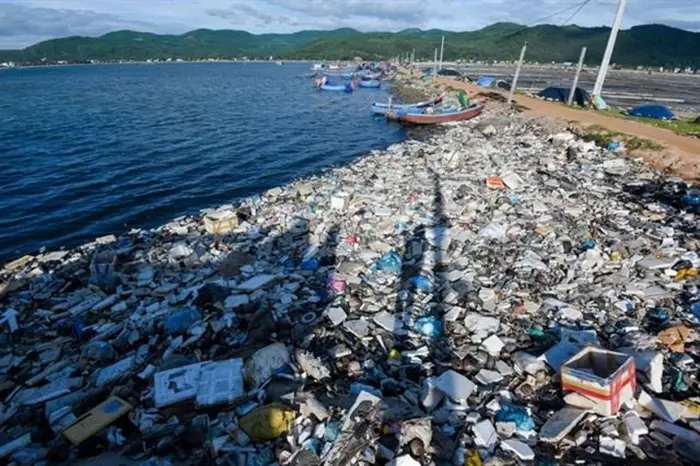Child care centers were off limits to immigration authorities. How that’s changed
In the days following President Donald Trump’s executive orders aimed at cracking down on illegal immigration, Christina Valdez, a child care provider in Minnesota, hung signs at the entrance to the building that houses her 36-child program, reminding visitors that it is private property. The signs are part of a new safety protocol Valdez has […] The post Child care centers were off limits to immigration authorities. How that’s changed appeared first on The Hechinger Report.


In the days following President Donald Trump’s executive orders aimed at cracking down on illegal immigration, Christina Valdez, a child care provider in Minnesota, hung signs at the entrance to the building that houses her 36-child program, reminding visitors that it is private property.
The signs are part of a new safety protocol Valdez has put in place to make sure her staff and the children they serve feel safe while they’re in the building: She will be the one talking to any officials who show up. Immigration agents are not allowed in the building unless they have a signed warrant with someone’s name on it.
“We’re here to serve the families,” she said. “We have always respected our families and their immigration status – whatever they need.”
Since 2011, child care programs were considered off-limits for immigration officials, along with churches and K-12 schools, under the federal government’s “sensitive locations” policy, said Wendy Cervantes, director of immigration and immigrant families at The Center for Law and Social Policy.
In January, the Trump administration ended that policy. A new directive from the Department of Homeland Security says agents will use “discretion along with a healthy dose of common sense” when enforcing immigration orders and laws. The department no longer bans agents from entering schools or other locations where children spend their days. U.S. Immigration and Customs Enforcement did not respond to multiple requests for comment about their approach to child care programs.
The new policy provides “very disturbing amounts of leeway” for ICE agents, said Cervantes. While researching the impact of the first Trump administration’s immigration policy on young children and programs, Cervantes and other researchers found examples of immigration officials waiting in child care program parking lots or “loitering” near programs to arrest parents.
“We had always been concerned about the type of discretion that ICE uses, because even when the policy was in place, there were ICE agents who thought it was appropriate to park out in a child care parking lot,” Cervantes said. “I’m very concerned what a ‘healthy dose of common sense’ under this administration is going to actually look like on the ground.”
Over the past few weeks, several early childhood and immigration advocacy organizations have mobilized to provide support and advice to child care providers and the families they serve. Groups like the Children Thrive Action Network, which focuses on children of immigrant families, and The Center for Law and Social Policy, have held webinars and published resources to educate child care providers on their rights and explain how to establish safety protocols to protect early learning programs from immigration officials. Child care providers nationwide have handed out “red cards,” which provide information on legal rights if stopped by immigration agents, to their faculty and staff.
“Child care programs, like K-12 schools, do have rights to restrict any type of person from entering their facility without having proper documentation,” Cervantes said. She recommends programs develop a protocol like the one Valdez created, including a plan for who will talk to agents, a script for what they should say, a way to record notes and a way to identify valid warrants. Perhaps most importantly, programs should have a plan to keep whatever is happening out of the sight of the kids in their care, she added.
For Valdez, her goal is to attend to the mental health needs of her staff, families and the children as new immigration policy continues to unfold.
“When you’re vulnerable, you need the people around you to be there with the information and what they can do to really support you,” she said. “That’s what we’re trying to focus on.”
More on child care and immigration
President Trump’s immigration orders are hitting some of the youngest children—and the child care staff who care for them. In America, 1 in 5 child care workers is an immigrant, and 1 in 4 children under the age of 6 has at least one foreign-born parent. As immigration policy has rolled out rapidly over the past few weeks, child care providers, including several who are immigrants, told me children and staff members are staying home, threatening an already fragile industry.
Research quick take
Parents are making massive sacrifices, including when it comes to their mental health, to attend to caregiving needs, according to a new report by Care.com. The report found 90 percent of 3,000 parents surveyed have lost sleep due to “caregiving stress,” and 71 percent have experienced health issues. Parents also reported taking on debt and applying for multiple jobs to pay for the cost of care-related expenses.
More early childhood news
Gothamist reports families of young children are scrambling after New York City officials chose to end leases for five child care programs.
Unlike K-12 schools, early learning programs often don’t have access to a pool of substitutes. In a story for EdSurge, Emily Tate Sullivan looks at efforts to create better systems to help early learning programs find those teachers.
In Minnesota, there is a growing demand for child care as more caregivers are going back to work in person, reports KSTP.
This story about immigration raids and child care was produced by The Hechinger Report, a nonprofit, independent news organization focused on inequality and innovation in education. Sign up for the Hechinger newsletter.
The post Child care centers were off limits to immigration authorities. How that’s changed appeared first on The Hechinger Report.











































































